Brian Meert's Blog, page 39
September 14, 2023
How To See Favorites on TikTok in 4 Easy Steps
Do you want to learn how to see favorites on TikTok?
TikTokers post about 34 million videos daily. This is a lot of content and can make finding your favorite TikTok videos difficult.
Whether it is a hilarious skit, a dance routine, or a heartwarming moment, you should know how to save and revisit videos you like. This article will uncover the secrets to effortlessly rediscover your favorite TikTok moments.
What Are Favorites for on TikTok?TikTok favorites serve several purposes. It enhances the user experience in various ways:
Bookmarking content: The primary purpose of TikTok favorites is to allow users to bookmark or save videos they find interesting and entertaining. This way, they can easily revisit and enjoy their favorite TikToks anytime without having to scroll through their entire feed.Learning and inspiration: Many users use “Favorites” to store educational or inspirational content. To organize your TikTok experience, add videos to your favorites. Whether it’s a tutorial, life hack, or motivational speech, having these videos readily accessible in your favorites can be a good resource.Sharing with others: Discovering great TikTok videos from various creators and sharing them with other TikTok users is one of the app’s joys. If you want to share TikToks with friends or followers, it’s easier to do so from your favorites. It can be useful when recommending content or joining in trends or challenges.Viewing Favorites on TikTokTikTok users can easily find their favorite videos on the TikTok app. To see your favorites, follow these steps:
1. Go to your profile: Tap the “Profile” icon in the bottom-right corner. It will take you to your TikTok profile.
2. Tap on the bookmark icon: To add TikTok videos to your favorites, tap the bookmark icon. The bookmark icon is the fourth icon from the left.
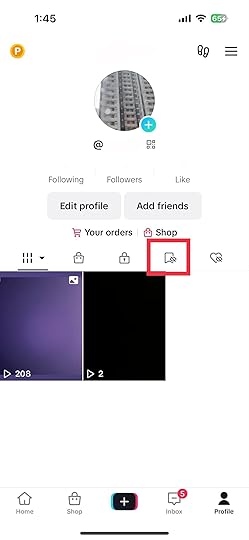
3. Scroll through your favorites: Once in the “Favorites” section, you will see a collection of TikToks you’ve previously saved as favorites. You can scroll through this list to see and enjoy your saved content.
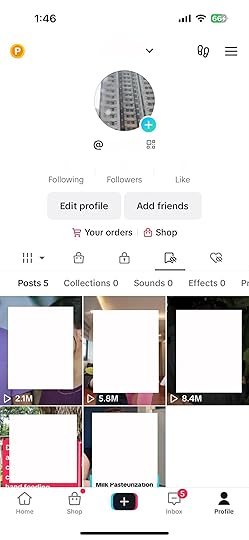
4. Organize your favorites: This step is optional. If you want to organize your favorites into different playlists, tap the “Collections” tab. You can create a new collection of videos and organize them on this tab. Just tap on “Create new collection” to do so.
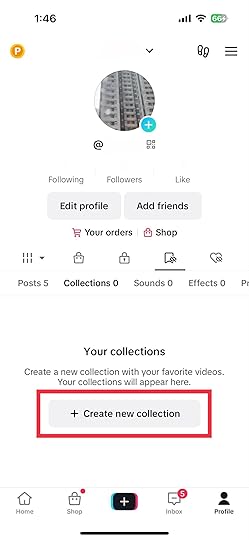



Read more: How to upload a TikTok Story.
How To Set a TikTok Video As FavoriteHave you seen a TikTok video you want to add to your favorites? Follow the steps below:
1. Tap on the Bookmark icon: The bookmark icon is on the screen’s right side. It is the third icon from the top.

2. Ensure that the icon turns yellow: Once added to your favorites, the icon will turn yellow. It is important to note that the creators will be notified that you added their posts to favorites.

To remove videos from your TikTok videos, follow these steps:
1. Find the video: Scroll through your list of favorite TikToks to find the one you want to remove.
2. Tap on the yellow bookmark icon: On the video you wish to remove, tap the yellow bookmark icon again. This icon represents the “Favorite” function.
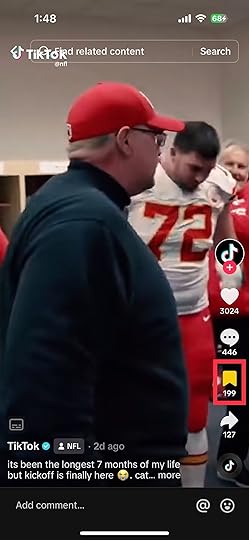
3. Wait until the icon turns white: When you tap the bookmark icon for a second time, it will turn white. It indicates that you have removed the video from your favorites. You can repeat this process for any other videos you want to remove from your favorites.
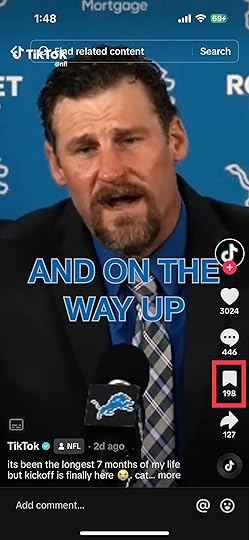
The “Favorites” feature is an effective way of bookmarking content on the platform. Using this feature, you can easily curate your top TikTok content collection. So, go ahead, explore your favorites, and enjoy a personalized TikTok experience like never before!
Are you ready to take your brand to the next level? Work with the best advertising agency!
Frequently Asked QuestionsHow many videos can you add to your favorites?You can add as many videos as you like to your videos.
Can I download my “Favorite” videos?TikTok has the option to download your favorite videos. However, this feature availability depends on the creator’s privacy settings.
What happens if a creator deletes a video I’ve set as a “Favorite”?If a creator deletes a video you’ve liked, it will be removed from your liked videos list. You won’t be able to access it anymore.
Related ArticlesSeptember 13, 2023
Sold by Amazon (SBA): A Symbol of Trust
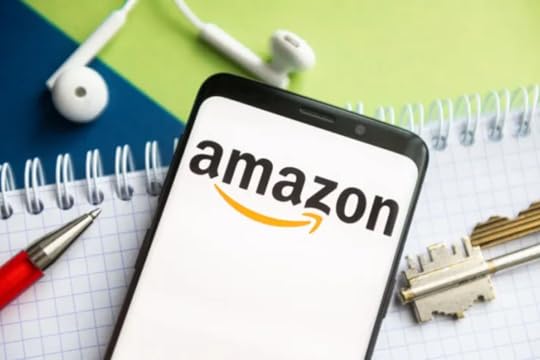
Do you know what the Sold by Amazon (SBA) tag represents?
Thanks to its dedication to customer satisfaction, Amazon has been the number-one online marketplace for sellers and buyers. The Sold by Amazon program is one of the ways Amazon ensures the best shopping experience for everyone.
This blog post will cover everything you need about the SBA program. Whether you are a seller or buyer, read on to discover its benefits.
Proceed further to discover the following topics:
What is Sold by Amazon and How it WorksHow to Join Sold by Amazon ProgramThe Importance of Choosing FBA When Selling On AmazonSteps to Identify Items Sold by AmazonPros and Cons of Items Sold by AmazonVital Differences Between Sold by Amazon and Shipped by AmazonWhat is Sold by Amazon (SBA)?Sold by Amazon is a selling method in which Amazon handles fulfillment, pricing, shipping, customer service, and even product returns. As a seller, this program allows you to focus more on sourcing great products and less on logistics.
When you use SBA, you hand over ownership of your products to Amazon. Amazon will set the price and send your earnings after selling. Additionally, Amazon determines the minimum gross proceeds (MGP), which is the lowest return you can get.
Advantages and Disadvantages of Amazon SBALet’s delve into the pros and cons of the Sold By Amazon program:
Pros.Free: Sellers don’t pay a fee to join this program.Fulfillment efficiency: Amazon streamlines the fulfillment process for sellers.Customer trust: The “Sold by Amazon” label can boost buyer confidence due to Amazon’s reputation for reliable service.Global reach: SBA products can be listed on multiple Amazon marketplaces, expanding a seller’s reach internationally.Customer service: Amazon manages customer service and returns, saving sellers time and effort.Taxes: Sellers don’t have to worry about taxes as Amazon covers sales tax.Prime eligibility: SBA products are often Prime-eligible, attracting more customers with fast and free shipping.Competitive pricing: Amazon uses its dynamic pricing engine to adjust prices to stay competitive. This can increase sales.Cons.Fees: Amazon charges fees for every product, including referral, fulfillment, and storage fees. These fees can have you a less profits.Lower margins: Since Amazon’s priority is offering buyers lower prices, you may end up with lower margins per sale.Limited control: Amazon sellers have limited control over customer experience because Amazon handles the entire process.How to Join Sold by Amazon Program

Follow these steps to use SBA:
Sign up: Go to Amazon Seller Central and sign up for your Amazon seller account.Prepare your inventory: List your products and prepare them. Ship them to Amazon.Register your brand: Sign up on Amazon Brand Registry. You will receive a code after providing the necessary details. Enter the code in your seller account.Access your account: Go to “Account Info” under “Settings.”Register for SBA: Go to “Your Services” and select “Register.”Add products: Select “Manage Inventory” and then “Sold by Amazon.” Choose the products you want to add.How To Find Items Sold by Amazon

To find items sold by Amazon on the Amazon website, follow these easy steps:
Visit Amazon’s website: Go to the Amazon website by typing “www.amazon.com” in your web browser’s address bar.Search for a product: In the search bar at the top of the page, type in the name or description of the product.Browse the results: Scroll through the sidebar on the left to find the “Department” section. Select the department that best describes what you need.Choose your seller: Continue scrolling on the sidebar until you reach the “Seller” section. Select Amazon.com. You will see a list of products sold by Amazon on the next page.Difference Between Sold by Amazon and Shipped by Amazon“Sold by Amazon” and “Shipped by Amazon” refer to different aspects of how Amazon handles products on its platform. Here’s a simple breakdown of the key differences between the two:
Sold by Amazon:Ownership: Amazon owns and sells the product directly to customers. They set the product price.Fulfillment: Amazon handles the entire fulfillment process, including storage, packing, and shipping.Customer service: Amazon provides customer service and manages returns for these products.Prime eligibility: Products sold by Amazon are often Prime-eligible, offering fast and free shipping to Prime members.Trust: The “Sold by Amazon” label can increase customer trust due to Amazon’s reputation for reliability.Shipped by Amazon:Ownership: The product is owned and sold by a third-party seller who lists it on Amazon’s platform.Fulfillment: Amazon stores and ships the product on behalf of the third-party seller using its fulfillment network (Fulfillment by Amazon or FBA).Customer service: Amazon may handle customer service and returns for products shipped by Amazon, but the seller retains some responsibility.Prime eligibility: Products shipped by Amazon may also be Prime-eligible, depending on the seller’s participation in the FBA program.Trust: While Amazon may handle the logistics, the “Shipped by Amazon” label doesn’t carry the same level of trust as “Sold by Amazon” because the seller determines the product price and quality.What Are the Differences Between SBA and FBA?The key difference between SBA (Sold by Amazon) and FBA (Fulfillment by Amazon) lies in ownership and control. SBA means Amazon owns and sells the product directly, while FBA means a third-party seller lists and sells the product on Amazon, with Amazon handling the fulfillment.
Final ThoughtsSold by Amazon is more than just a label on a product. It represents a streamlined shopping experience, with Amazon taking care of everything from storage to shipping, ensuring fast and reliable service. SBA offers a win-win solution to both Amazon sellers and shoppers.
Are you planning on running an ad campaign on Amazon? Let the best Amazon advertising agency manage it!
Frequently Ask Questions on Sold by AmazonHow does sold by Amazon control the pricing of its products?Amazon uses a dynamic pricing engine that continuously monitors competitive prices and responds to changes throughout the market.
Are all the products sold by Amazon sourced from trusted brands?No, not all products in the Sold by Amazon (SBA) program are sourced from trusted brands. While Amazon does sell products from well-known and trusted brands, the SBA program also includes products from a wide range of third-party sellers.
Are there storage limits for Sold by Amazon products?Yes, there’s a storage limit for Sold by Amazon products. However, it depends on the Amazon seller account type or its selling history. It also depends on storage volume and storage duration.
Related ArticlesThe Best Amazon Influencer Storefront Examples
What Is a Social Media Influencer?

The term “social media influencer” has become quite the buzzword lately. But what does it really mean, and why the rising popularity?
Let’s talk about it!
Social media influencers are people who have become super popular on sites like Instagram, TikTok, and YouTube.
They build huge social media following and fans who love their posts. Influencers share photos and videos about fashion, travel, comedy. And other quality content their followers care about.
Their followers feel like they “know” these influencers. They trust influencers’ opinions on what’s cool or what product or service to buy.
Smart brands notice influencers’ power. In recent years, more brands have been partnering with influencers to promote their business. The influencer tells their fans how great a brand’s product is. This helps the brand sell more because followers trust the influencer’s advice.
This guide reveals everything you need to know about social media influencers.
Here’s a sneak peek of what you’ll learn:
Why influencing is getting popularHow influencers get paidHow to work with Social Media InfluencersYou’ll even get tips to become an influencer yourself!
Let’s start with a more detailed explanation as we explore the world of these rising social media stars.
What is an influencer?As mentioned earlier, an influencer is someone who has become famous on social media. They have built a big audience of fans who follow them. Influencers create content about their lives, interests, and opinions. They then share these through posts, photos, videos, and livestreams.
Each influencer focuses on a specific topic, like fashion, food, comedy, or dance. This is called their niche. Some examples include:
A fashion influencer shares outfit photos and clothing haul videosA travel influencer posts about fun vacations and resort reviewsA food influencer makes cooking videos and restaurant recommendationsInfluencers seem like a friend you know closely. Their content gives a peek into their daily lives. Followers get excited to see what they post next. They feel invested in the influencer’s journey.
Influencers have some sort of magic powers over their fans. When they say a product is cool or recommend something, their followers listen. Brands want to work with influencers because of their power to impact what followers buy.
The key is influencers have built a big, loyal audience on social media. Their fans view them as an expert on a topic and trust what they say. This influence is very valuable.
What is influencer marketing?Influencer marketing refers to when brands partner with influencers to promote their products or services. It’s a fairly new advertising strategy brands are using today.
42% of marketers believe influencer marketing delivers the best ROI, and 89.2% say it is highly effective.
First, brands find influencers who are popular in a topic they want to advertise. For example, a clothing brand finds fashion influencers.
Next, the brand pays the influencer or gives them free products. In exchange, the influencer talks about the product to their followers. They post photos, videos, or stories highlighting the product and saying how great it is.
This helps the brand because social media followers trust the influencer’s opinion. When an influencer they admire says the product is cool, fans listen. They are more likely to buy it.
Influencer marketing works well because it seems natural, not like an obvious ad. Followers feel like they are getting a real recommendation from someone they like. Brands tap into the influencer’s reputation and audience to meet their marketing objectives.
When done well, influencer marketing makes brands seem trendy and drives massive sales for products and services.
What does a social media influencer do?An influencer’s main job is creating social media content for their fans. Their niche and audience interests guide what type of content they make and post.
Here are some things influencers commonly do:
Post photos on their social media page showing their lifestyle, products, outfit ideas, recipes, etc. They use captions to engage followers.Record YouTube videos like makeup tutorials, trying viral challenges, unboxings, day in my life vlogs, and more. Fans love video.Make short, funny, or informational TikTok videos on topics followers care about. These spread quickly.Write blog posts to share tips, experiences, and detailed thoughts related to a particular niche.Go Live on Instagram or Facebook to chat directly with followers in real-time. Fans feel a connection.Tweet opinions, observations, and commentary about their industry, events, etc.Influencers also constantly interact real-time with followers. They like comments, respond to questions, and pay attention to feedback. This relationship with their audience is key.
Influencers work hard to pump out content their niche fans will enjoy. And they do that consistently. Their large, loyal audience and content are what make them valuable to brands.
Types of social media influencersSocial influencers are not created equal. There are different categories and tiers based on factors like audience size, content style, and overall vibe.
By Follower NumbersInfluencers are often grouped into tiers based on the size of their audience:
Nano influencers usually have 100 – 10,000 followers. Their audience is small but targeted.Micro influencers have 10,000 – 100,000 followers. This is a mid-size, niche audience. They have expertise in a particular field and are often regarded as industry experts.Macro influencers have 100,000 – 1 million followers. Their audience is starting to become more mainstream.Mega influencers have over 1 million followers. At this point, their audience is quite broad.Celebrity influencers are household-name stars like singers or actors. They have the largest audiences.More followers means wider reach, but smaller influencers could have high engagement in their niche.
By Content They CreateSocial media influencers create high-quality content around specific topics.
Lifestyle influencers give an inside look at their everyday lives and interests.Beauty influencers focus on makeup, fashion, skincare, and style trends.Travel influencers share destinations, hotel reviews, trip tips, and more.Food influencers post recipes, restaurant reviews, cooking tips, and foodie experiences.Fitness influencers discuss exercise regimens, nutrition, wellness products, and more.There are also gaming, photography, parenting, and countless other niche influencers that can create content around. Of course, the content must be tailored to the specific audience’s interests.
By Their Level of InfluenceSome influencers aim to inspire, while others take a more everyday relatable tone.
Aspirational influencers showcase glamorous lifestyles and success stories. Followers look up to them.Educational influencers teach their audience valuable skills and lessons through their content.Relatable influencers build connections through sharing common experiences and a down-to-earth approach.Brands choose influencers who convey the right tone, from prestige to accessibility. Their style of influence differs.
How to Become a Social Media InfluencerDo you want to become a popular influencer? It takes strategy and hard work, but anyone can build an influencer brand. Following these key steps can help you realize your dream of becoming a Social Media Influencer:
Choose Your NichePick a specific niche you love and can create content for. You could go with fashion, cooking, comedy, sports, dance, etc. Make sure it’s something that can catch the interest of lots of people.
Find Your Target AudienceGet very specific about who you want to reach with your content. Figure out your ideal fans’ age, location, interests, and values.
Create Your Personal BrandCome up with your influencer name and look. Design a logo, color scheme, etc., that fits your niche. Show your personality through your posts.
Make Great ContentPost amazing photos, videos, and blogs consistently around your niche. Post frequently to keep fans engaged and coming back. You should be a good content creator if you want to be a successful influencer.
Interact with Your FollowersReply to comments, ask questions, and build real relationships with your audience. Making connections is key.
Grow Your Social FollowingOrganically gain more followers by promoting your account. You can also partner with similar influencers to share your best content with their audience.
Track Your PerformanceLook at follower growth, likes, and engagement. Use this data to guide what your audience responds to best.
Collaborate with BrandsWork with brands that fit your niche. Make sponsored posts and partnerships that align with your brand values.
Building an influencer brand takes lots of steady effort but can be very rewarding. Stick with it!
How many followers do you need to be a social media influencer?There is no magic number of followers you need to be considered an influencer. Even just 1,000 truly engaged followers can make someone an influencer.
Most big brands look for influencers with at least 10,000 followers before doing a paid partnership. Micro-influencers with 10,000 -100,000 followers can be a great fit for many brands.
But don’t just focus on getting more and more followers. It’s more important that the followers you have genuinely like your content and listen to your opinions. Fake or bought followers don’t help.
Some nano- and micro-influencers have smaller numbers of social media followers but get super high engagement. That’s because their niche is very specific. Those real connections mean more than millions of followers who don’t engage.
So, while more followers definitely help, it’s not the only thing that matters. Building genuine influence with a tightly focused audience is key, even if that audience is small. Great content that resonates drives real impact.
Do influencers pay for followers?Some influencers do buy fake followers or use “bots” to try to boost their numbers. But most real, successful influencers grow their audience organically.
Fake followers don’t actually watch the influencer’s content or buy anything they recommend. They just add to their vanity numbers.
Brands can tell when an influencer has fake followers because the engagement is low. Their posts don’t get many real likes or comments compared to their high follower count.
Influencers with authentic audiences put in the work to make great content consistently that speaks to their niche. This earns them real followers over time.
Focusing on fake followers instead of engaging with a real audience won’t help you become a successful influencer in the long term. Brands value quality over quantity.
Genuine influencers got to where they are by staying patient, working hard, and connecting with their community. There are no shortcuts if you want real impact.
How does an influencer get paid?Top social media influencers make big money from their audience. Here are the main ways influencers get paid:
Sponsored posts – Brands pay them to make posts about their products. The influencer tells followers how great the product is.Affiliate marketing – Influencers share special promo links. They earn a commission when followers buy through their links.Selling products – Many influencers create online shops to sell their own merch, online courses, ebooks, and more.Ads – They display ads on YouTube, websites, etc., and earn money when the ads are viewed.Brand ambassador deals – Big long-term deals to be the face of specific brands.Platform partnerships – YouTube, Instagram, etc., pay top creators a cut of the ad money their content earns.Successful influencers don’t rely on just one way to make money. They diversify across these opportunities.
Their power to get followers to click, purchase, sign up, or take other actions makes influencers valuable to brands for promotions. Their influence earns them money.
How much are influencers paid?How much an influencer gets paid depends on their follower size, engagement, and the platform they use. Here are some examples:
Nano-influencers with just 1,000 followers may charge $30 – $150 for a post. Their audience is small but targeted.Micro-influencers with 10,000 -100,000 followers typically charge $150 – $500 to make a post. Brands love their niche engagement.Macro-influencers with 100,000 – 1 million followers may charge $1,000 – $20,000 for a post. Their audience is larger and more mainstream.Mega-influencers with over 1 million followers could earn $25,000+ per post. They have a massive reach. Celebrity influencers like singers or actors charge huge amounts – sometimes over $500,000!Now don’t take these average rates as gospel – influencer fees are never set in stone. The niche, content type, partnership length, negotiation power, and performance metrics like video views all impact pricing.
A bigger follower size usually means more money per post, but engagement and audience quality also matter.
Some top social media influencers (By Total Followers on Instagram, Facebook & TikTok)Let’s talk about some top influencers who have large followings on social media platforms like Instagram, Facebook, and TikTok.
Cristiano Ronaldo – Soccer star with over 600 million followers.




These mega-influencers have huge audiences and get paid millions to partner with brands. But micro-influencers can still be successful in their niche even with smaller followings.
Why is influencing is getting popularHere are some key reasons influencing is getting more popular:
Relatability – Influencers seem more real and accessible than traditional celebrities. Followers on their social media pages feel they know them closely.Targeting – Their niche focus lets brands appeal to specific groups. For example, a food influencer reaches only foodies.Engagement – Followers identify and engage with influencers’ content. They care what influencers post.Accessibility – Anyone can try to become an influencer thanks to social media. You don’t need connections.Cost – Partnering with micro-influencers provides cheap promotions compared to big celebrity deals.Younger folks who grew up using the internet feel like influencers are part of their community, not outside advertisers. That feeling drives authentic engagement. It makes influencer marketing quite powerful compared to traditional ads.
72% of Millennials and Gen Z say they follow influencers on social media.
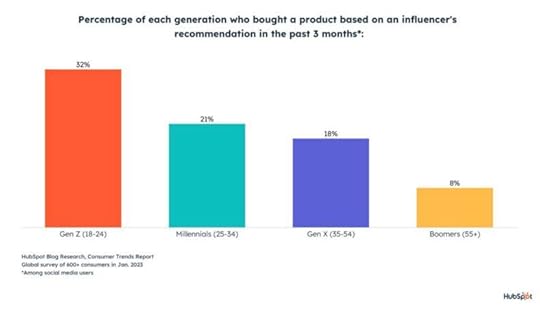
Influencers have changed digital marketing forever. Their impact continues to grow.
What is the difference between a social media influencer and a social media marketer?Influencers and social media marketers both work on social media sites. Here are the most significant differences between them:
Influencer
Uses their own personality to influence peopleMore casual tone focused on their nichePaid for brand sponsorships and postsCares about engagement and followersSocial Media Marketer
Promotes brands as their jobUses brand’s formal messagingPaid a salary by the brandCares about metrics like salesAn influencer tries to influence with their reputation. A marketer does promotions and makes posts on behalf of a brand in a professional way.
Influencers feel real and more relatable to regular people. But they both help brands succeed on social channels in different ways.
How to Create a Successful Campaign with Social Media Influencers
Want to use influencers to promote your business? Collaborating with influencers could be beneficial for you. Here are some tips to boost your chances of success:
Set clear goals – Decide what you want to achieve, like more sales or brand awareness.Find the right influencers – Find ones whose audience and niche fit your brand.Discuss expectations – Talk about timelines, content guidelines, usage rights, pay, etc.Make a content plan – Work together to brainstorm creative post ideas.Give promotional assets – Provide discount codes or free products the influencer can share. andAmplify reach – Have influencers post across platforms and re-share their posts.Track performance – Use links and codes to see engagement, clicks, and sales.Build relationships – Treat influencers as real partners, not a channel of ad promotion.With clear goals and the right partnerships, your influencer campaign can succeed!
What Social Media platforms are most popular for influencer marketing?Certain social media sites are hot spots for influencer marketing. Popular influencer marketing platforms include:
Instagram – This very visual platform is great for lifestyle content. It has a great number of young audiences.TikTok – Popular for short, fun videos. It’s trendy and reaches younger demographics.YouTube – Leading for long video content. Enables lucrative creator monetization.Facebook – Still has a massive audience, especially among older social media users not on TikTok or Instagram.Snapchat – Discover feature offers unique video ad options. The audience here is very engaged.The platform of choice depends on the influencer’s audience, content format, and campaign goals. Influencers tend to be most active on visual platforms like Instagram, TikTok, and YouTube.
These platforms allow them to showcase their expertise through video and photos. They make influencer marketing easy and effective.
How influencers are impacting social media marketingInfluencers have changed social media marketing in big ways. Here are the major ways they are impacting it:
Their posts seem more natural than regular ads. Followers trust them.They let brands target specific niche audiences well.Their connections with followers mean more engagement and sales.Brands reach new audiences through influencer’s followers.Brands seem more relatable by linking with “real” influencers.Influencers make creative, tailored content for each social platform.Their analytics help brands make smarter marketing choices.Brands that team up with fitting influencers in their niche get great benefits. In many areas, influencer marketing is now the main strategy.
ConclusionHope you had as much fun reading this influencer guide as we did putting it together 
The power and popularity of influencers are only growing. Their impact on trends, buying decisions, and the entire marketing industry keeps increasing.
However, influencer marketing may not make sense for every brand’s goals. Our marketing team at AdvertiseMint can help determine if paid social ads are a better fit to reach your target customers.
We’ve helped many business owners surpass their marketing goals using our advertising expertise on Facebook, Instagram, TikTok, and Snapchat.
We’d like to do the same for you. And it begins with a free 30-minute consultation.
Click here to book a FREE CONSULTATION with one of our social ads experts.
September 11, 2023
Amazon SEO Services: Boosting Your Amazon Brand

Are you wondering how Amazon SEO services can help your businesses?
Amazon is the go-to place for shopping online, with millions of products available. But with so much competition, how can you make your products stand out? The answer lies in Amazon SEO services.
This blog post will explain how Amazon search engines work and discuss the advantages of working with an Amazon SEO company.
Understanding Amazon SEO ServicesAmazon SEO, or search engine optimization, is the practice of fine-tuning product listings to rank higher in Amazon’s search results. Much like Google, Amazon has its search algorithm. Understanding how the Amazon algorithm works can significantly impact your sales. However, you can hire an Amazon SEO agency to get expert help.
Here is a simplified breakdown of how Amazon SEO services work:
Keyword research: Identify the most profitable keywords and phrases potential customers might use to search for your products. Amazon tools like auto-suggest and third-party keyword research tools can be incredibly helpful for your Amazon brands.Optimizing product listings: Once you have your keywords, use them strategically in your product titles, descriptions, and bullet points. Make sure your content is informative, engaging, and grammatical error-free.Images and visuals: High-quality images can make or break a sale on Amazon. So, you’ll need to ensure your images are clear and well-lit. They should also showcase your product from various angles.Pricing and reviews: Competitive and positive reviews are crucial in Amazon’s ranking algorithm. So, you should learn how to get reviews on Amazon.Fulfillment method: Amazon rewards products that are part of its Fulfillment by Amazon (FBA) program. Consider using FBA to enhance your product’s higher ranking chances.Backend keywords: Remember to include the right keywords in the backend of your product listings. These keywords aren’t visible to customers but are indexed by Amazon’s search algorithm.Read more: How to get ungated on Amazon.
How Amazon SEO Can Supercharge Your Brand
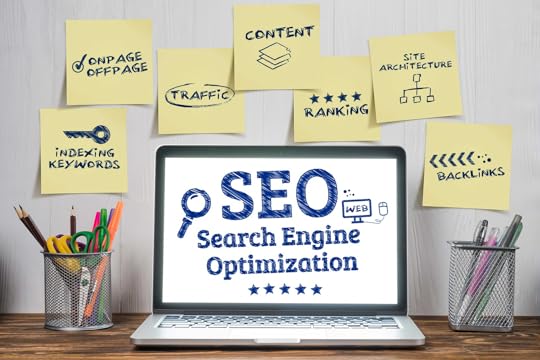
Below are ways Amazon search engine optimization can improve your brand:
1. Increased visibility.When shoppers search for products on Amazon, they often stick to the first page of results. Amazon SEO helps your products land on that coveted first page. The more visible your products are, the more chances you have to win over potential customers.
2. Enhanced credibility.When your products consistently appear at the top of search results, it builds trust among shoppers. People are more likely to buy from brands they perceive as credible and reliable.
3. Improved click-through rates.Appealing product titles and descriptions, crafted with SEO in mind, can entice users to click on your products over competitors. A higher click-through rate can lead to more sales.
4. Competitive edge.Competition in Amazon marketplaces is fierce, with numerous brands vying for attention. Amazon SEO can help you stand out in this competitive landscape by optimizing your listings to their full potential.
5. More sales.Ultimately, the goal of any brand is to boost sales. Amazon SEO can significantly contribute to this by increasing your product’s visibility, which leads to more sales opportunities.
Benefits of Partnering with an Amazon SEO CompanyThe following are the benefits your Amazon business can get from partnering with an Amazon SEO company:
1. Expertise that counts.Amazon SEO companies specialize in understanding how the Amazon algorithm works. They have the knowledge and experience to navigate this unique digital marketing landscape. With their expertise, they can optimize your product listings, making them more attractive to customers and Amazon’s search engine.
2. Time-saving solutions.Managing Amazon SEO can be time-consuming. It involves keyword research, content optimization, and keeping updated with Amazon’s ever-changing rules. Outsourcing this task to a professional company frees up your valuable time to focus on other aspects of your business.
3. Stay competitive.The Amazon marketplace is highly competitive. Many Amazon sellers are already using Amazon SEO services to gain an edge. By partnering with an SEO company, you level the playing field and ensure your products can compete effectively with others in your niche.
4. Maximize your ROI.Amazon SEO is not just an expense; it’s an investment. It can significantly increase your product’s visibility, attract customers, and boost sales. The return on investment (ROI) from Amazon SEO services is substantial.
5. Data-driven strategies.Amazon SEO companies use data and analytics to refine your product listings continually. They track your products’ performance, monitor market changes, and adjust their strategies accordingly. This data-driven approach keeps your products ahead of the curve.
How To Choose the Best Amazon SEO Agency for Your Brand

Selecting the best Amazon SEO agency is a crucial decision that can significantly impact your brand’s success on the platform. Below, we will show the steps to follow to choose the perfect Amazon SEO agency:
Step 1: Set clear goals.You can start by defining your goals. What would you like to do with Amazon SEO? Whether it’s increased sales, better visibility, or improved rankings, having clear objectives will guide your agency selection.
Step 2: Determine your budget.Could you decide on a budget that aligns with your goals? Doing this will help you narrow your options and find an agency that fits your financial parameters.
Step 3: Research thoroughly.Start your search by researching Amazon SEO agencies. When you do, look for agencies with a strong reputation, positive client reviews, and a portfolio that reflects their expertise.
Step 4: Check industry experience.Make sure the agency has experience in your industry or niche. Familiarity with your market can significantly affect their ability to optimize your product listings effectively.
Step 5: Ask for references.Feel free to ask for references from agencies you are considering. Speaking with their previous or current clients can provide valuable insights into their performance and results.
Step 6: Assess services offered.Look over the services each agency offers. Are they comprehensive and tailored to your needs? Ensure they cover essential areas like keyword research, listing optimization, and performance tracking.
Step 7: Discuss pricing.During consultations, have a transparent discussion about pricing. Understand what’s included in their packages and if there are any additional costs. Clarify how they handle billing.
Step 8: Evaluate communication.Pay attention to their communication style during your first interactions. A responsive and clear communicator is crucial for a successful partnership.
Step 9: Review contracts carefully.Once you’ve made a selection, review the agency’s contract meticulously. Ensure it outlines all agreed-upon services, deliverables, timelines, and payment terms. Seek clarifications on any uncertainties.
Step 10: Assess data security.If the agency needs access to your Amazon Seller Central account, please ensure they have secure data handling practices and confidentiality measures.
Step 11: Evaluate reporting and analytics.Inquire about their reporting and analytics practices. Understand how they track progress and measure results. Doing this will help you gauge the effectiveness of their efforts.
ConclusionSEO is a must for Amazon sellers serious about selling products on this colossal platform. Amazon SEO services can help you unlock the full potential of your product listings, increase visibility, and boost your sales. By partnering with an Amazon SEO company that understands the intricacies of Amazon’s search engine, you’re on a successful path.
Are you about to launch an ad campaign on Amazon? Contact the leading advertising agency in the industry.
Frequently Asked QuestionsWhat are Amazon SEO services, and why do I need them?Amazon SEO services are strategies and techniques used to optimize product listings on Amazon so they appear higher in search results. You need them to increase your product’s visibility, attract more customers, and boost sales on the platform.
How does Amazon SEO differ from traditional SEO?Amazon SEO is tailored specifically for the Amazon marketplace, focusing on optimizing product listings within the platform. Traditional SEO, on the other hand, is broader and covers optimizing websites for search engines like Google.
What are the key components of Amazon SEO services?The primary components of Amazon SEO services include keyword research, optimizing product titles and descriptions, and improving product images. Also, the key Amazon SEO components comprise managing pricing and reviews, using FBA, and monitoring backend keywords for indexing.
Related ArticlesHow to Get Ungated on Amazon: Unlocking Opportunities
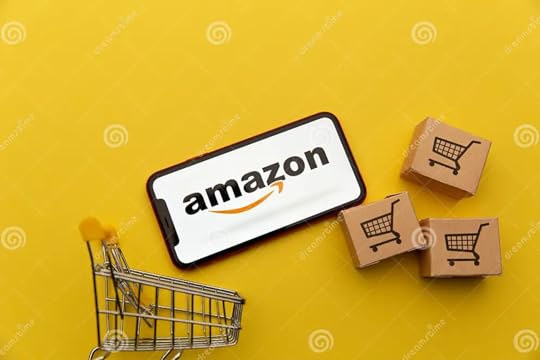
Do you know how to get ungated on Amazon?
If you’ve been selling on Amazon, you might have encountered those frustrating restrictions that prevent you from selling certain brands or categories. This limits your product offerings and sales potential.
This blog will guide you through the step-by-step process of getting ungated on Amazon.
What Is Amazon Gating?Amazon gating is a set of rules and restrictions determining who can sell what on the platform. It’s like a virtual gatekeeper that ensures the quality and authenticity of products on Amazon. These rules are designed to maintain a safe and trustworthy marketplace for buyers and sellers.
Amazon uses gating to regulate access to specific categories, brands, or subcategories. Sellers must meet certain criteria and provide documentation to gain approval for selling in these gated areas. This process prevents counterfeit products, unauthorized reselling, and other fraudulent activities.
Different Types of RestrictionsAmazon gating isn’t a one-size-fits-all concept. It varies depending on the category, brand, or subcategory you’re interested in. Here are the common types of restrictions you might encounter:
Category gating: Certain product categories, such as Health and Personal Care or Grocery, may require sellers to meet specific criteria or provide documentation before gaining approval to sell in them.Brand gating: Some brands have strict requirements for sellers. To offer their products, you must prove your legitimacy and obtain permission from the brand owner or Amazon.Subcategory gating: You might find subcategories with additional gating requirements within broader categories. For instance, if you want to sell in the “Clothing” category, you may need further approval to sell luxury fashion items.ASIN-level gating: Sometimes, individual product listings (ASINs) may be gated. You’ll need authorization to list and sell specific products, often due to their high value or potential for counterfeiting.Getting Ungated On Amazon

You can become ungated on Amazon by following the steps below:
Step 1: Research gated categories and brands.Understanding which categories and brands on Amazon are gated requires some research. Begin by identifying the gated areas. Amazon provides an official list of gated categories and brands on the Seller Central website. This list is your starting point, allowing you to understand the gated areas. Another practical approach is to perform a real-time check directly on Amazon. Attempt to list a product in the category or brand you’re interested in. If it’s gated, Amazon will promptly inform you.
Once you’ve located the gated areas, it’s time to delve deeper into your research. Begin by thoroughly understanding the requirements associated with each gated category or brand. Each one has its unique set of rules and prerequisites. Take the time to read and comprehend these regulations; think of it as studying for an important exam.
After understanding the requirements, assess your eligibility. Determine if you currently meet these requirements or if you need to fill some gaps. These gaps could include obtaining specific invoices or agreements to prove your legitimacy as a seller. Additionally, take note of any associated costs. Certain gated categories might entail additional fees or requirements. Be sure to factor these into your decision-making process.
Step 2: Building a solid sales history.Creating a strong sales history on Amazon is foundational to becoming an approved seller in gated categories or brands. It’s a bit like constructing a sturdy base for a building.
Start with popular products: Begin by selling products that are in demand and have a good sales history. Popular items tend to sell faster and can help boost your metrics.Competitive pricing: Price your products competitively. Research your competitors and set your prices accordingly. Being too expensive can deter buyers, while selling too cheaply may hurt profits.Offer great customer service: Provide excellent customer service by responding promptly to buyer inquiries and professionally addressing any issues or concerns. Happy customers are more likely to leave positive feedback.Fast shipping: Use Amazon’s fulfillment services (Fulfillment by Amazon or FBA) to ensure fast and reliable shipping. Prime-eligible products often attract more buyers.Keep inventory in stock: Avoid running out of stock, especially for popular items. Consistent availability helps maintain a good sales history.Optimize product listings: Create informative and appealing product listings. Use high-quality images, detailed descriptions, and relevant keywords to attract buyers.Monitor metrics: Regularly check your seller metrics, including order defect rate, late shipment rate, and pre-fulfillment cancel rate. Aim to keep these metrics within Amazon’s acceptable ranges.Encourage positive feedback: Politely request feedback from satisfied customers. Positive feedback can improve your seller reputation.Advertise wisely: Consider using an Amazon advertising agency to promote your products. Targeted advertising can increase visibility and sales.Stay compliant: Adhere to Amazon’s policies and guidelines. Violations can negatively impact your account and sales history.Step 3: Submit your application.When you’re ready to apply for Amazon gating, follow these straightforward steps:
Navigate to Seller Central: Log in to your Amazon Seller Central account. You’ll need to create one if you don’t have one yet.Find the application section: Look for the section related to the category or brand gating applications. It’s typically under “Inventory” or “Add a Product.”Select the gated area: Choose the specific category or brand you want to apply for. Be sure it matches the area you’ve prepared and gathered documentation for.Fill out the application: Complete the form by providing the requested information. This may include details about your business, your product sourcing, and your documents.Attach required documents: Upload the digital copies of your prepared documents. Ensure they are clear and legible.Review and submit: Double-check all your information and documents for accuracy. Once you’re confident everything is in order, hit the submit button.Wait for a response: Amazon will take some time to review your application. Be patient and check your email regularly for updates.Be prepared for verification: Amazon might reach out to verify your documents or request additional information. Respond promptly to such requests.Step 4: Waiting for approval.After submitting your application for Amazon gating, you’ll enter a waiting phase. Here’s what to expect and how to make the waiting period more manageable:
Be patient: The approval process can take some time. It varies depending on Amazon’s workload and the specific category or brand you’ve applied for.Check your email: Amazon will communicate with you via email, so keep a close eye on your inbox. Check both your regular and spam folders regularly.Stay informed: Respond promptly and accurately if Amazon requests additional information or documents. This is a normal part of the approval process.Continue selling: While waiting, don’t pause your Amazon business entirely. Keep selling in your current categories or brands to maintain a steady income.Monitor your account: Monitor your seller metrics and customer feedback. Maintaining a positive selling record can improve your chances of approval.Plan for rejections: Unfortunately, not all applications get approved on the first try. If your application is rejected, don’t be discouraged. Review the reasons for the rejection and work on addressing them before reapplying.Stay informed: Stay updated on Amazon’s policies and any changes affecting your application. Knowledge is your ally in this process.Step 5: Maintaining compliance.Staying compliant with Amazon’s rules is like driving safely to keep your license. Here’s how to do it in straightforward terms:
Know the rules: Understand Amazon’s policies and guidelines for the categories or brands you’re selling in.Keep accurate records: Maintain clear records of your transactions, invoices, and agreements.Quality assurance: Ensure the quality and authenticity of your products.Excellent customer service: Keep your customers happy. Address their concerns promptly and professionally.Monitor metrics: Regularly check your seller metrics. Stay within Amazon’s acceptable ranges to avoid issues.Avoid policy violations: Be vigilant about Amazon’s policies. Violations can lead to warnings or even suspension.Adapt to changes: Amazon’s rules may change. Stay informed and adapt your business practices accordingly.Final ThoughtsRemember that patience, preparation, and compliance are your allies in your journey to become an Amazon seller in gated categories or brands. Stay persistent, follow the guidelines, and adapt as needed. With dedication, you can unlock new opportunities and thrive on Amazon.
Frequently Ask Questions on “How to Get Ungated on Amazon”Do I need to contact Amazon ungating services to process my application?Reaching out to Amazon ungating services to handle your application is unnecessary, but it can be helpful in certain situations. Amazon’s ungating services can assist you and provide pointers if you have difficulty getting approval for restricted categories.
How long does the approval on getting ungated on Amazon take?There is no specific time frame for getting the approval in this process. It may take a few days if there’s no problem with your application or a few weeks if Amazon requires additional documents.
Can my application be rejected during the Amazon ungating procedure?Yes! Your application may rejected during the process. Amazon has specific criteria and requirements based on the restricted category you choose. If your application doesn’t have the requirements and documentation or has inaccurate information, Amazon will reject it.
Related ArticlesHow To Get Reviews on Amazon
Do you want to learn how to get reviews on Amazon?
As an Amazon seller, positive reviews are vital to your growth on the platform. They can improve your brand’s reputation and boost your sales. However, getting those valuable reviews isn’t always a walk in the park.
But fear not because this blog post will unravel the secrets of how to get reviews on Amazon organically.
1. Understand Amazon’s Review Policy

To succeed in getting reviews on Amazon, it’s crucial to grasp Amazon’s rules and regulations regarding reviews. Amazon maintains strict guidelines to maintain the authenticity and credibility of its review system. Here are some key points to keep in mind:
Honesty: Amazon expects reviews to be truthful and unbiased, reflecting genuine customer experiences.No paid reviews: You cannot pay for reviews; review swaps are prohibited.Avoid self-reviews: Writing reviews for your products or competitors is against Amazon’s policies.Beware of fake reviews: Fabricating reviews or using incentives to manipulate them is strictly prohibited.Additionally, you should avoid requesting reviewers to alter or delete their reviews and artificially inflating the “Helpful” votes on your reviews. Be careful using third-party review services that might breach Amazon’s policies.
2. Deliver an Outstanding Product

One of the crucial factors you must prepare for is ensuring that your products are high-quality. They should meet or exceed the customers’ expectations. A great product is the foundation of positive reviews. Hence, it is crucial to ensure that this need is met. Here are some considerations to ensure you deliver an outstanding product:
Market research: Identify gaps in the market that your product can address effectively.User-friendly design: Design your product with user-friendliness in mind.Innovation and uniqueness: Innovate continuously to stay ahead of the competition.3. Optimize Your Product Listings

Optimizing your product listing on Amazon is critical in attracting potential buyers and increasing your chances of receiving reviews. Start by crafting compelling product titles and detailed descriptions. You should also use high-quality images. The following are a few things to remember:
Keyword research: Conduct thorough keyword research to identify the most relevant and high-traffic search terms related to your product.Title optimization: Include key product attributes, such as brand name, size, color, and unique selling points.Pricing strategy: Set competitive prices based on market research and competitor analysis.4. Encourage Early ReviewsReceiving early reviews for your Amazon products is crucial for building credibility and driving initial sales momentum. Here’s how to encourage early reviews effectively:
Friends and family reviews (Within Amazon’s guidelines).Consider reaching out to friends and family who have purchased your product on Amazon and ask them to leave an honest review. However, ensure they adhere to Amazon’s review guidelines, prohibiting biased or incentivized reviews. Encourage them to provide genuine feedback based on their experience.
Amazon Early Reviewer ProgramTake advantage of Amazon’s Early Reviewer Program, which encourages customers to leave reviews in exchange for small incentives. Amazon rewards customers with a gift card ranging from $1 to $3 for their reviews. This can be a useful way to kickstart your review collection process.
Utilizing Vine VoicesVine Voices are seasoned reviewers on Amazon who receive products for free or at a discounted rate in exchange for honest and unbiased reviews. Partnering with Vine Voices can help you get initial reviews from trusted and experienced reviewers, boosting your product’s credibility.
5. Deliver Exceptional Customer ServiceProviding top-notch customer service on Amazon can be a game-changer in generating reviews. Here’s how to ensure your customers have a great experience:
Promptly respond to customer inquiries.Timely responses to customer questions and concerns show that you care about their needs. Make it a priority to answer inquiries promptly, ideally within 24 hours. This satisfies the individual customer and leaves a positive impression on potential reviewers.
Address and resolve issues proactively.Sometimes, issues may arise with orders. When they do, take a proactive approach to resolve them. Offer solutions, replacements, or refunds when necessary. Happy customers are likelier to leave positive reviews, even if they initially encountered problems.
Provide a seamless shopping experience.From the moment a customer clicks on your product to the point of delivery, ensure a seamless and hassle-free shopping experience. Accurate product descriptions, transparent pricing, and on-time delivery are essential. Customers who receive what they expect are more inclined to share their positive experiences through reviews.
6. Utilize Amazon’s Request a Review FeatureAmazon provides a handy tool called the “Request a Review” feature to help you get more customer reviews. Here’s how to use it effectively:
How to use the Request a Review button on Seller CentralAccess your Seller Central account.Go to the “Orders” tab.Find the order for which you want to request a review.Click on “Request a Review” next to the order.The Importance of timing.Timing is crucial when using this feature. Amazon allows you to request a review between 4 and 30 days after the order is confirmed as delivered. Consider waiting a few days after delivery to ensure the customer has had a chance to use and evaluate the product.
When requesting reviews, keep your messages polite and concise. Thank the customer for their purchase and politely ask for their feedback. Avoid sounding pushy or demanding.
7. Implement a Follow-up Strategy

After your initial request for reviews, it’s essential to have a follow-up plan in place to maximize your chances of receiving feedback. Here’s how to implement an effective follow-up strategy:
Automated follow-up emails.Set up automated follow-up emails to be sent to customers a few days after they’ve received their orders. Express gratitude for their purchase, ask if they’re satisfied with the product, and kindly request a review. Automation saves time and ensures consistency in your follow-up efforts.
Timing and frequency considerations.Choose the timing of your follow-up emails wisely. Sending them too soon after delivery can be perceived as pushy while waiting too long might result in missed opportunities. A follow-up email sent 5-7 days after delivery is often a good starting point. Limit the number of follow-up emails to avoid annoying customers.
Personalizing follow-up messages.Personalization can make a significant difference. Address customers by their names and reference their specific orders or products. A personalized touch shows that you genuinely care about their experience and increases the likelihood of a positive response.
8. Encourage User-Generated ContentHarnessing user-generated content is a powerful way to get reviews and build a community around your products. Here’s how to encourage customers to generate content for your Amazon listings:
Customer photos and videos.Encourage customers to share photos and videos of your products in action. Potential buyers gain more trust and insights when they see real customers using the item. Share user-generated media in your product listings and social media to create a vibrant, engaged community.
User-generated content contests and incentives.Hold contests or incentives for customers to submit creative content featuring your products. For instance, you can run a contest where customers can win prizes for the best video or photo showcasing your item. This not only boosts engagement but also generates buzz around your products.
Sharing customer success stories.Highlight customer success stories and testimonials. Showcase how your product has solved real-life problems or improved lives. When other potential customers see these stories, they’re more likely to leave reviews and become part of the user-generated content community.
9. Monitor and Respond to Reviews

Regularly check your product listings for new reviews. Respond to reviews courteously. It would help if you addressed both positive and negative feedback. This shows that you value customer input. You can keep the following in mind:
Thank positive reviews: Express gratitude to customers who leave positive reviews.Address negative reviews thoughtfully: Take the negative feedback as an opportunity for improvement.Keep it concise: Keep responses concise and to the point.10. Be Patient

Building a substantial number of reviews takes time. Hence, it would help if you stayed committed to providing great products and excellent customer service.
Read more: Why your Amazon reviews aren’t showing up.
The Importance of Reviews on AmazonReviews on Amazon hold significant importance to sellers and customers. A positive review is crucial in building trust with potential customers on Amazon. Here are the reasons why reviews are essential on the platform:
Influence purchase decisions: Reviews serve as social proof. It helps potential customers to make informed purchasing decisions. Positive reviews can persuade shoppers to choose your product over competitors.Build trust and credibility: A product with numerous positive reviews appears more credible. Customers are more likely to trust the opinions of fellow consumers over marketing claims.Provide product insights: Reviews often include detailed information about the product’s performance, quality, and features. Customers can gain valuable insights into what to expect from the product. It reduces the risk of disappointment.Highlight unique selling points: Reviews can highlight your product’s benefits or advantages. Positive reviews often mention specific features that customers love. It can help you emphasize your product’s strengths.Enhance search visibility: Amazon’s search algorithm considers various factors, including the number and quality of reviews. Products with more reviews tend to rank higher in search results. It helps increase their visibility.Increase sales and conversions: Positive reviews can boost sales and conversion rates. Customers are more likely to purchase when they see that others have had a positive experience with the product.Identify areas for improvement: Negative reviews, when constructive, can provide good feedback for product improvement.Engage with customers: Responding to positive and negative reviews allows sellers to engage with their customers. It demonstrates a commitment to customer satisfaction and can mitigate the impact of negative feedback.Legal and regulatory compliance: Amazon has strict policies against fake reviews and fraudulent practices. Genuine reviews help sellers stay compliant with Amazon’s rules and avoid penalties.Long-term success: Building a strong review profile can contribute to the long-term success of a seller on Amazon. Positive reviews can lead to repeat purchases and loyal customers.Final ThoughtsAmazon sellers understand the power of online reviews in shaping their reputation. This is because a single negative review can impact sales. Proactive Amazon sellers actively request reviews from satisfied customers to ensure a good portrayal of their products. Product quality and shopping experience are often reflected in Amazon reviews. Hence, it is important to always ensure the product’s quality and customer experience.
Are you looking for ways to increase your Amazon visibility and product sales? Work with the best advertising agency now!
Frequently Asked QuestionsWhat is the Amazon early reviewer program?The early reviewer program is an Amazon service that encourages customers to leave reviews for newly launched products. You can enroll your products for a fee, and Amazon offers small incentives to participating customers.
Should I respond to negative reviews on Amazon?Yes, responding to negative reviews tactfully is a good practice. It shows that you care about customer feedback and can resolve issues or mitigate the impact of negative feedback.
How long does it take to build numerous reviews on Amazon?Building a significant number of reviews can take time. This varies depending on product type, customer engagement, and market competition. Focus on providing a great product and customer experience consistently.
Related ArticlesAmazon Influencer Storefront Examples
September 10, 2023
TikTok 101: TikTok Ads Specs
Are you curious about TikTok ads specs?
TikTok’s unique ad formats offer exciting opportunities to businesses. However, you need to understand their specifications to maximize them.
This article will explore TikTok ad specifications, including TikTok ad formats, sizes, and guidelines. Whether you are a seasoned marketer or new to the TikTok scene, you will discover the key components of successful TikTok ad campaigns.
TikTok Ads Manager ToolTikTok Ads Manager is a platform provided by TikTok for advertisers and businesses. It is a hub where advertisers can create, manage, and optimize their ad campaigns on TikTok.
With the help of this tool, advertisers can define their target audience based on demographics, interests, behaviors, and more to ensure their ads reach the right users. Advertisers can also set their ad budgets and bidding strategies. It helps them manage their ad spending effectively.
Additionally, TikTok Ads Manager enables advertisers to upload and customize their ad creatives. It includes videos and images to align with their campaign goals. Advertisers can select whether their ads will appear on TikTok, such as users’ feeds or within specific content.
Furthermore, the platform provides real-time performance data and analytics. This allows advertisers to monitor their campaigns and track key metrics. It also allows advertisers to make adjustments as needed.
5 TikTok Video Ads SpecsHere are the most popular TikTok video ad specs:
1. In-feed ad specs.

In-feed ads are short video ads that appear in users’ TikTok feeds as they scroll through the app. They are known for blending in with the organic content on the platform, making them an effective means to connect with TikTokers. In-feed ads can include a CTA button, which makes it easier for users to take action, like purchasing or visiting a website. This feature makes in-feed ads a popular choice among brands and marketers.
When preparing in-feed ad videos for TikTok, it’s crucial to consider several key specifications. Firstly, the aspect ratio should be one of the three: 9:16, 1:1, or 16:9. This allows creative flexibility in your content. For file compatibility, TikTok accepts several formats, including .mp4, .mov. .mpeg, .3gp, and .avi.
Remember that the video should not exceed 60 seconds. It is recommended to make it between 9 and 15 seconds long for optimal engagement. Lastly, keeping your TikTok video size ≤500 MB is best to ensure seamless uploading and sharing on the platform.
2. Topview ads specs.TopView ads are premium, full-screen video ads at the top of a user’s feed. These ads provide an excellent opportunity to capture the user’s attention immediately with a high-impact video message. TikTok’s audience is known for its high engagement levels. TopView ads, being the first content users see, have the potential to generate a strong impression and drive user engagement.
When making Topview ads, the maximum length should not exceed 60 seconds. Doing so allows for concise and engaging content. For resolution, your videos should be ≥540*960px, ≥640*640px, or ≥960*540px, depending on your chosen aspect ratio. You can choose from 9:16, 1:1, or 16:9 for the latter.
Regarding file types, TikTok accepts formats such as .mp4, .mov, .mpeg, .3gp, or .avi.Lastly, keep your video file size below or equal to 500 MB to facilitate smooth uploads and sharing.
3. Brand takeover ad specs.Brand Takeover Ads are one of the most prominent and immediate ways to grab user’s attention on TikTok. These are similar to TopView Ads, but they come with added interactivity. They allow brands to take over the user’s screen with an image or a short video when they first open the app. This can be an effective way to make a strong initial impression.
You should adhere to certain specifications for optimal performance when dealing with static images and videos. For static images, utilize file types such as JPG or PNG to ensure efficient handling and display. You should also keep the file size below 50 KB to maintain fast loading times and an excellent user experience. When working with videos, select a file format between .mp4, .mov, .mpeg, .3gp, or .av for compatibility across various platforms.
4. Branded hashtag specs.
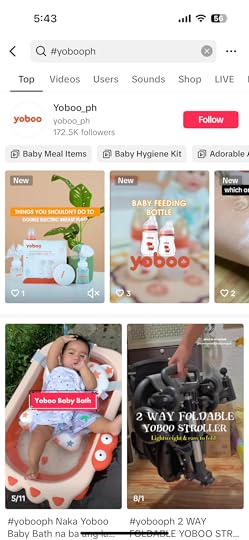

Brands can create and promote their hashtags on TikTok to encourage user-generated content and challenge participation. This can help increase brand engagement and visibility as users create and share content using the branded hashtag. TikTok’s creative and playful environment allows brands to create fun and engaging challenges that align with their brand identity. This creative freedom can lead to memorable and shareable content.
The specifications of this type of ad are similar to the other ads mentioned in this article.
5. Branded effects specs.

TikTok offers a range of augmented reality (AR) effects that businesses can customize and use. Users can use these effects in their videos to incorporate the brand’s unique creative elements. As they share the videos with their followers, they help your brand reach a broad audience. Additionally, the specifications for this type of ad are similar to others.
Best Implementations for TikTok AdsHere are the best practices for TikTok ads:
Understand your audience: Research and identify your target audience on TikTok. It would help if you also considered factors like age, interests, behaviors, and location.Choose the right ad format: TikTok offers various ad formats. Select the format that aligns with your campaign goals and audience.Create engaging creative content: Capture viewers’ attention within the first few seconds. Showcase your product or message prominently. You also have to use high-quality visuals, music, and effects.Leverage TikTok Trends: Monitor popular TikTok trends and challenges and consider incorporating them into your ad content when relevant. Likewise, it is helpful to participate in trending challenges to increase visibility.Embrace user-generated content (UGC): Encourage your viewers to create content related to your brand or product. Featuring UGC in your ads builds authenticity and trust.Optimize video length: Keep your ads concise and engaging. Aim for a length of 15-30 seconds for in-feed ads. Longer videos should have compelling content to maintain viewer interest.Add clear Calls To Action (CTA): Include a CTA in your ad, such as “Shop Now,” “Learn More,” or “Download the App,” to guide viewers toward the desired action.Monitor performance metrics: Regularly track key performance indicators (KPIs) like click-through rates (CTR), conversion rates, and return on ad spend (ROAS).Ad scheduling: Consider the optimal times and days to run your ads, depending on when your target audience is most active on TikTok.Compliance with TikTok policies: Ensure your ads comply with TikTok’s policies to prevent issues or ad rejections.Final Thoughts on TikTok Ads SpecsUnderstanding TikTok ad specs is the key to unlocking the full potential of your advertising efforts on this dynamic platform. With the right knowledge of video dimensions, ad formats, and creative strategies, you can engage your target audience and boost your brand’s visibility. So, explore the exciting world of TikTok advertising and watch your campaigns thrive!
Ready to take your advertising game to the next level? Work with the best TikTok advertising agency!
Frequently Asked Questions on TikTok Ads SpecsHow much does a brand takeover ad cost?The cost of a Brand Takeover ad on TikTok can vary widely based on multiple factors. However, it usually costs $50,000 to $120,000.
How important are vertical videos?Making your videos vertical is best since the platform is vertical. By making your videos look native to the platform, you can improve the overall user experience.
How can I use carousel ads?Carousel ads are a way to tell people about your brand or show them the products or services you offer. You can link each part of the carousel to its special page.
Related ArticlesA Seller’s Guide to Amazon Marketplaces
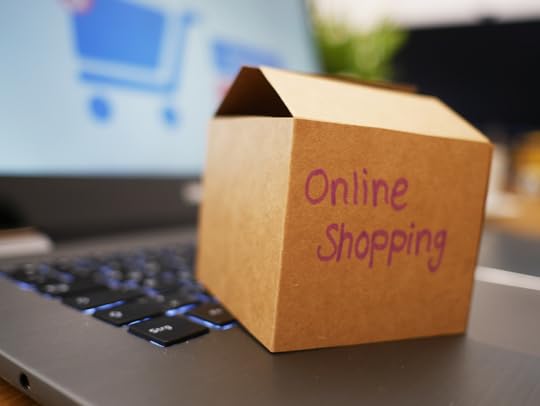
Are you thinking of selling products to a worldwide audience on Amazon marketplaces?
Amazon marketplaces are not just a single entity but a vast ecosystem of platforms, each catering to specific regions and customer bases. Selling on these platforms opens doors to a global customer base and countless opportunities.
Whether you are an expert seller or a budding entrepreneur, understanding how these marketplaces work can be a game-changer. This blog post will dive into the world of Amazon marketplaces, unravel their significance, and explore the opportunities they offer.
What Are Amazon Marketplaces?Amazon marketplaces are online stores operated by Amazon in various countries and regions where Amazon sellers sell and list their products. These marketplaces serve as digital market hubs, connecting buyers and sellers around the globe. While Amazon.com is the most well-known marketplace, Amazon has expanded its reach to numerous other countries, each with its dedicated marketplace.
Read more: How to sell to Amazon directly.
The Global Reach of Amazon Marketplaces

One of the standout features of Amazon marketplaces is their global reach. Amazon ships products to over 100 countries, making it one of the most extensive e-commerce networks worldwide. Each of the international Amazon marketplaces caters to its local customer base’s specific needs and preferences, ensuring a tailored shopping experience. Some of the most prominent Amazon international marketplaces include:
1. Amazon USA (Amazon.com).Amazon.com, the USA’s largest and most well-known online shopping hub, is the most prominent part of Amazon North America. It’s often referred to as “The Everything Store” as it offers a staggering selection of products across virtually every category imaginable. With millions of sellers and a customer base in the hundreds of millions, it’s the go-to online shopping destination for US and global customers. Also, it is Amazon’s busiest marketplace.
2. Amazon UK (Amazon.co.uk).Amazon UK is one of the prominent Amazon marketplaces in Europe. It serves the United Kingdom and is known for its vast selection, quick delivery options, and thriving marketplace for third-party sellers. British sellers provide locals in the UK with everything from electronics to fashion and beyond.
3. Amazon Germany (Amazon.de)Amazon Germany is a part of Amazon Europe. The German Amazon marketplace is a powerhouse shopping hub with a robust ecosystem and an extensive range of products. It’s a preferred platform for buyers and sellers in Germany and neighboring European countries.
4. Amazon India (Amazon.in)Amazon India is tailored for Indian locals and has quickly become a dominant force in the country’s e-commerce landscape. It offers India’s ever-growing online shopper base a wide range of products and services.
5. Amazon Canada (Amazon.ca)Amazon Canada is a constituent of Amazon North America. It is a full-service Amazon marketplace that caters to the Canadian market, offering a diverse selection of products and services. With quick shipping options and a trusted reputation, It is a popular choice for Canadian consumers.
6. Amazon France (Amazon.fr)The French Amazon store is France’s go-to e-commerce platform. It provides many products and services while fostering a thriving marketplace for local and international Amazon sellers.
7. Amazon Spain (Amazon.es).Amazon Spain offers a user-friendly online shopping experience for Spanish consumers. It features a broad selection of goods and services.
8. Amazon Japan (Amazon.co.jp)Japan’s Amazon marketplace is a favorite among Japanese locals. It offers Japanese consumers various products, including electronics, fashion, and books.
9. Amazon Australia (Amazon.com.au)Amazon Australia is a top online shopping hub in the country. It offers an extensive range of products and services to the Land Down Under.
10. Amazon United Arab Emirates (Amazon.ae)The United Arab Emirates, with its thriving economy and diverse population, was a natural choice for Amazon’s expansion into the Middle East. Since its launch, it has been a prominent e-commerce store in the UAE.
11. Amazon Mexico (Amazon.com.mx)Since the establishment of the Amazon business in Mexico, it has provided a vast selection of products and customer-centric services to Mexican shoppers. Amazon Mexico is a popular marketplace among Mexican consumers due to its diverse product catalog that spans electronics, fashion, and more.
12. Amazon Singapore (Amazon.sg)Amazon provides Singaporean shoppers with a premium online shopping experience. Amazon Singapore is a favorite in the Lion City due to its vast selection of products and renowned customer-centric approach.
13. Amazon Brazil (Amazon.com.br)Amazon Brazil is one of the country’s most visited online shopping platforms. It is popular among Brazilian shoppers because it has an extensive product catalog and a customer-focused approach.
How To Sell at Amazon’s International Marketplaces
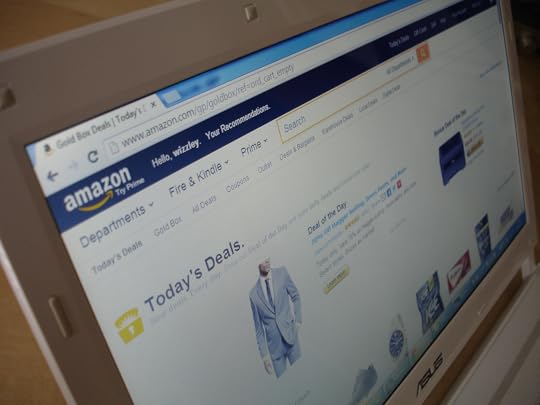
Selling on the Amazon international marketplaces can open up opportunities for your business. It allows you to reach customers in different countries, expand your products’ global reach, and increase sales. But how do you get started? Follow the steps below:
Step 1: Create an Amazon seller account.The first thing you need is an Amazon seller account. If you already have one, you are ahead of the game. If you don’t have one, you can create an account on Amazon’s Seller Central platform. Provide basic information about your business and choose the international marketplaces you want to sell.
Step 2: Choose your international Amazon marketplace.Amazon marketplace operates worldwide in countries like the United States, Canada, the United Kingdom, and more. Decide which international marketplaces align with your Amazon business goals and target audience. Then, you can choose one or several, depending on your strategy.
Step 3: Set up your seller profile.Once you have selected your target international marketplaces, it’s time to set up your seller profile. Setting up your profile includes details about your business, verifying your identity, and configuring your payment methods.
Step 4: Understand tax and legal requirements.International selling comes with tax and legal responsibilities. You may need to register for Value Added Tax (VAT) or other local taxes in the countries you’re selling. It is essential to research and comply with each marketplace’s tax and legal requirements.
Step 5: Manage currency and pricing.Different countries have different currencies and pricing expectations. It would be best to decide how to handle currency conversion and pricing. The platform provides Amazon sellers with tools to set competitive prices for each marketplace.
Step 6: List your products.To start selling, you must list your products on each international marketplace. Also, ensure your product listings are accurate and follow the marketplace’s guidelines, including language requirements.
Step 7: Fulfillment options.Decide how you want to fulfill orders. You can use Fulfillment by Amazon (FBA), where the platform takes care of storage, packing, and shipping, or fulfill orders yourself (FBM). Using Amazon’s fulfillment centers can simplify international shipping and make your products eligible for Prime benefits in some marketplaces.
Read more: Amazon FBA vs. FBM.
Step 8: Manage shipping and customer service.It would be best if you offered reliable shipping options to international customers. Consider each marketplace’s shipping time, cost, and customs requirements. Additionally, provide excellent customer service by responding promptly to inquiries and addressing any issues.
Step 9: Optimize your listings.You should be able to monitor your product listings regularly and make necessary adjustments to optimize them for each marketplace. These adjustments include updating product titles, descriptions, and images to cater to local preferences.
Step 10: Expand and diversify.As you gain experience selling successfully on your chosen international Amazon marketplace, consider expanding to multiple Amazon marketplaces. Diversifying your presence can reduce the risk of relying on a single marketplace.
Things Every Amazon Marketplace Have in CommonAlthough each Amazon marketplace may seem different, they share several fundamental elements crucial for Amazon sellers.
A global customer base: All Amazon marketplaces offer access to a massive global customer base. Hence, your products have the potential to reach millions of customers worldwide. Whether you’re a seller in the UK targeting customers in France, Japan, or the US, Amazon can cater to your needs.Seller Central: Amazon provides a unified Seller Central platform for sellers to manage their accounts. Regardless of the marketplace you’re selling in, you’ll use Seller Central to list products, manage inventory, set prices, and track orders. Seller Central is your central hub for selling on Amazon.Fulfillment options: Amazon offers consistent fulfillment options across marketplaces. If you choose FBM or FBA, you can fulfill orders and have Amazon handle storage, packing, and shipping.Product listings: Creating product listings is a standard process on all Amazon marketplaces. You’ll provide product details, including title, description, price, and images. Ensuring accurate and appealing product listings is crucial for attracting customers and driving sales.Competitive pricing: Competitive pricing is key to success on Amazon, no matter the marketplace. You should monitor and adjust your pricing to stay competitive in your niche. Amazon’s algorithms often consider price competitiveness when ranking products in search results.Customer service: Providing excellent customer service is a universal requirement. Therefore, you should respond promptly to customer inquiries and address every issue or concern. Positive customer feedback and ratings can boost your visibility and reputation on all Amazon marketplaces.Reviews and ratings: Customer reviews and ratings are common on Amazon worldwide. You should encourage satisfied customers to leave positive ratings and reviews to influence other shoppers’ buying decisions significantly.Advertising and promotion: Amazon’s advertising tools, such as Sponsored Products and Sponsored Brands, are available on most Amazon marketplaces. These tools help you promote your products to a broader audience and increase visibility. Our Amazon advertising agency also works with sellers in all marketplaces.Compliance with policies: Amazon enforces guidelines consistently across marketplaces. You must comply with marketplace-specific policies and Amazon’s general policies to avoid potential issues.ConclusionAmazon marketplaces are a powerful tool for e-commerce success. They provide access to a global customer base, diverse opportunities, and the potential for significant growth. By harnessing the potential of these marketplaces and tailoring your strategies to each, you can maximize your presence on Amazon and thrive in the competitive world of online retail.
Frequently Asked QuestionsWhat is an Amazon marketplace?An Amazon marketplace is an online platform where sellers can list and sell their products to customers. Amazon has multiple marketplaces in different countries, creating opportunities for sellers to reach diverse audiences.
How do I choose the right Amazon Marketplace for my business?Selecting the right Amazon marketplace for your business depends on your target audience and goals. Research market demand, competition, and regulations in different countries to make an informed decision.
How do I optimize my product listings for international markets?To optimize listings for international markets, consider translating them to the local language. Additionally, you should adapt product titles and descriptions and understand customers’ cultural preferences in each marketplace.
Related ArticlesAmazon Retail Arbitrage: Turning Bargain Hunting into Profit

Are you looking to explore Amazon retail arbitrage?
Amazon retail arbitrage is a smart way to leverage your shopping skills and turn them into a money-making endeavor. With research, dedication, and careful planning, retail arbitrage sellers can transform their bargain-hunting adventures into successful online businesses.
This blog will help you understand Amazon retail arbitrage and how you can get started.
What is Amazon Retail Arbitrage?Amazon retail arbitrage is a fancy term for buying low-priced items from one place and selling them at a higher price on Amazon. It’s like being a modern-day treasure hunter. But instead of hunting for ancient artifacts, you are hunting for profitable deals at local stores, clearance sales, thrift shops, and online marketplaces. The goal is to buy products for less than they are worth and resell them on Amazon to make a profit.
Comparing Amazon Retail Arbitrage with Other Business Models
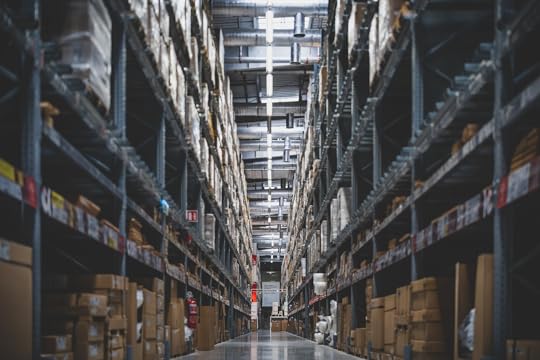
Below, we will explore how retail arbitrage compares with other business models on Amazon:
1. Retail arbitrage business model.As discussed above, retail arbitrage involves buying low-priced items from various sources and reselling them at a profit on Amazon. It’s a hands-on approach that requires you to physically hunt for deals, but it can be a great starting point for beginners.
ProsLow barrier to entry: Amazon retail arbitrage sellers don’t need to create products.Quick start: You can begin sourcing and selling relatively quickly as a retail arbitrage seller.Scalability: You can scale your business as you gain experience as a retail arbitrage seller.ConsTime-consuming: Scouting for deals for your retail arbitrage business can be time-intensive.Limited control: If you practice retail arbitrage on Amazon, you will rely on external sources for your inventory.2. Private labeling business model.The private label business model involves finding generic products and rebranding them with your label or logo. After that, you sell them as your unique brand on Amazon. It is a more involved process but can offer higher profit margins.
ProsBrand ownership: With a private label business model, you build your brand identity.Potential for higher profits: With private label business models, you control the pricing and can differentiate your products.ConsHigher upfront cost: Creating your brand and packaging can be expensive.Riskier: Investing in inventory that doesn’t sell is risky.3. Wholesale business model.Wholesaling on Amazon means buying profitable products in bulk from authorized suppliers or manufacturers and selling them on Amazon. This model can be more stable but requires establishing relationships with suppliers.
ProsEstablished supply chain: If you are a wholesaler on Amazon, you work with trusted suppliers.Less time spent sourcing: Buying in bulk reduces the need for constant deal hunting.ConsHigher initial investment: Buying in bulk can require a significant upfront investment.Competition: Many Amazon sellers may have access to the same product.4. Drop-shipping business model.Drop-shipping involves listing products you don’t have in stock. When a customer orders, the item is shipped directly from the supplier to the customer. This model minimizes inventory costs.
ProsLow up-front costs: As an Amazon seller account holder who practices drop-shipping, you only pay for products when you sell.No inventory management: As a drop-shipping seller on Amazon, you don’t need to store or handle products.ConsLower profit margins: The convenience comes at lower profit margins.Less control: You rely on suppliers for product availability and quality.Read more: Amazon FBA vs. Dropshipping.
Handmade business model.If you’re a craftsperson or artist, the handmade category on Amazon allows you to sell your unique, handmade products. It’s a niche market with an emphasis on craftsmanship.
ProsUnique products: As a craftsperson on Amazon, you create one-of-a-kind products.Artistic expression: The handmade business model is ideal for creative individuals.ConsLimited scalability: Handmade products can take time to create.Competitive: It can be challenging to stand out in the handmade market.Why You Should Choose Amazon Retail ArbitrageBelow, we will explore why you might choose retail arbitrage over other business models on Amazon:
Low initial investment: Retail arbitrage requires relatively little upfront money. If you integrate retail arbitrage into your Amazon business, you will buy products at low prices from retail stores, clearance racks, or retail e-commerce platforms. Hence, you won’t need to invest heavily in product development or branding, making it an accessible option for low-budget Amazon sellers.Quick start: Retail arbitrage is a great choice if you are eager to get started and see results sooner rather than later. You can start finding deals and selling products on Amazon relatively quickly. This speed allows you to test the waters and learn as you go.No product creation: Unlike other Amazon business models like private labeling or handmade, you don’t need to create your products with retail arbitrage. Instead, you are finding and reselling existing products, eliminating the need for product design or manufacturing.Learning opportunity: Retail arbitrage provides an excellent learning opportunity. As you search for profitable deals, you gain valuable experience in market research, pricing strategies, and product sourcing. This knowledge can be beneficial if you explore other Amazon business models in the future.Scalability: While you start small with retail arbitrage, you can gradually scale up your operations as you become more experienced and confident. This scalability allows you to grow your business at your own pace.Diverse product range: You can sell various products with retail arbitrage, from electronics to clothing to toys. This diversity can help your business adapt to changing market trends.Flexibility: Retail arbitrage is flexible. You can work on it part-time, full-time, or seasonally. This flexibility makes it easy for people with varying schedules and commitments.Low risk: Since you are not heavily investing in product development, there’s low risk involved in retail arbitrage. If a product doesn’t sell as well as you hoped, you can liquidate your inventory without significant losses.Getting Started With Retail Arbitrage on Amazon

If you are ready to turn your shopping skills into a money-making adventure, follow the easy steps below:
Step 1: Create an Amazon seller accountYou need your own Amazon seller account before selling on the Amazon platform. You can sign up on the Amazon Seller Central website and choose between an individual seller account or a professional account. The individual seller account suits occasional sellers, while the professional account is ideal for high-volume sellers.
Step 2: Do your research.Research your market using Amazon’s tools and the Amazon Seller smartphone app. Look for items with good sales ranks and positive reviews. You can also explore niche markets or trending products.
Step 3: Set a budget.Determine how much money you want to invest in your retail arbitrage venture. Your budget will guide your purchasing decisions, so you must be realistic.
Step 4: Source your products.Time to shop! You can look for deals at local stores, clearance sales, thrift shops, and online marketplaces. Additionally, you can use your smartphone to scan product barcodes and check prices against Amazon’s listings. Look for products priced lower than what they are selling for on Amazon.
Step 5: Calculate profits.Calculate your potential profit for each item. You should consider including referral fees, fulfillment fees, and shopping costs to ensure you are making money.
Step 6: List your products.Create product listings on Amazon. Ensure you provide clear and accurate descriptions, including condition (used or new), and take good-quality photos. Be honest about your products to build trust with buyers.
Step 7: Price competitively.Set competitive prices to attract buyers. To do that, you should check the prices of similar products on Amazon and adjust your prices accordingly.
Step 8: Fulfillment.Decide how you will fulfill orders. You have the option of choosing between FBM or FBA. If you choose FBM, you will handle product storage, packing, and shipping yourself. But if you choose FBA, Amazon will handle everything for you.
Step 9: Manage your inventory.After choosing your fulfillment method, you should keep track of your inventory to ensure your items stay in stock. Amazon provides retail arbitrage sellers with tools to manage their inventory so you can easily keep track of your inventory.
Step 10: Customer service.Deliver outstanding customer service by responding quickly to buyer inquiries and addressing every issue professionally. Positive reviews can boost your sales.
Step 11: Keep learning and scale gradually.The e-commerce world is always changing, so you need to stay updated. Keep learning about market trends, Amazon policies, and strategies to improve your retail arbitrage business.
Additionally, start small and grow your business at your own pace. As you gain experience and profits, you can reinvest in more inventory to expand.
ConclusionThat’s it! You are now on your way to becoming a successful retail arbitrage seller on Amazon. However, you should remember that it might take time to see significant profits, so be patient and persistent. Keep hunting for great deals; your retail arbitrage venture could become a thriving business in no time.
Would you like to run an ad campaign on Amazon? Work with the leading Amazon advertising agency for the best results.
Frequently Asked QuestionsHow much money do I need to start with retail arbitrage on Amazon?The amount you need to start with can vary. But many people begin with a few hundred dollars budget, which allows them to buy their first batch of products. As you make profits, you can reinvest and grow your business.
Where can I find products for retail arbitrage?You can find products for retail arbitrage at local stores, thrift shops, garage sales, and online marketplaces like eBay and Facebook Marketplace. Look for items on sale or clearance and products with discounts.
Do I need any special skills or experience in retail arbitrage?You can start with retail arbitrage without special skills or prior experience. However, it helps to be organized, have an eye for deals, and be willing to research products and prices on Amazon.
Related BlogsDetermining What To Sell on Amazon FBA
Are you wondering what to sell on Amazon FBA?
Amazon allows its sellers to take advantage of its vast resources via the Fulfillment by Amazon (FBA) program. However, figuring out the perfect products to list on this platform can be both exciting and challenging.
This blog post will unravel the secrets of finding profitable items to sell on Amazon FBA. Whether you’re a beginner or looking to expand your product line, we’ll provide actionable insights and strategies to make informed decisions.
What Products Can I Sell on Amazon FBA?You can sell a wide range of items on Amazon FBA. However, it is essential to consider market demand, competition, profitability, and Amazon’s policies when deciding what to sell. Here are some types of products you can sell on Amazon:
1. Consumer electronics: Smartphones, headphones, chargers, and smartwatches.
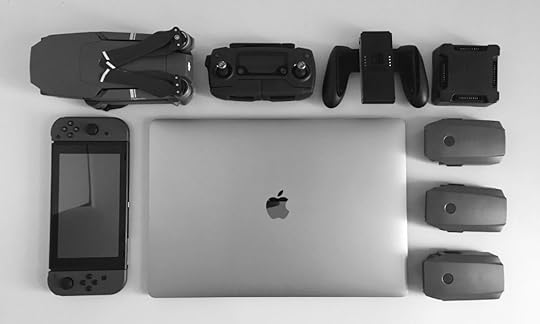
2. Apparel and fashion: Clothing, shoes, accessories, and jewelry.

3. Health and personal care: Supplements, skin care products, fitness equipment, and personal hygiene items.

4. Beauty and cosmetics: Makeup, skin care products, fitness equipment, and personal hygiene items.

5. Toys and games: Toys for children of all ages, board games, and puzzles.

6. Books and media: Physical and digital books, DVDs, blue-rays, and video games.

7. Automotive: Car accessories, parts, and maintenance products.

8. Office supplies: Stationery, writing instruments, and office equipment.

9. Jewelry and watches: Rings, necklaces, bracelets, watches, and other jewelry items.

10. Pet supplies: Food, treats, pet care products, toys, pet beds, and furniture.

And more! The sky is the limit when picking items to sell on Amazon FBA. Amazon offers a vast, diverse marketplace with numerous product categories. Hence, you can explore and choose products from various niches, industries, and markets.
Read more: Amazon FBA vs. Dropshipping.
How To Do Market ResearchMarket research is a crucial step in understanding your target audience and competition. Here is a step-by-step guide on how to conduct effective market research:
Define your objectives: Clearly outline what you want to achieve with your market research. Ask yourself what you are looking for. It could be launching a new product, understanding customer preferences, evaluating market size, or identifying trends.Identify your target audience: Determine who your ideal customers are. You should consider their age, gender, location, income, interests, and lifestyle.Gather data: E-commerce business owners often use data-driven strategies to pinpoint top-selling products for their Amazon FBA inventory. Start with available information from publicly accessible sources such as government reports, industry publications, and online databases. It can provide a baseline understanding of your market.Competitor analysis: You should identify your main competitors and analyze their products, tactics, and pricing strategies. Evaluate their strengths and weaknesses. Look for opportunities to differentiate yourself.Primary research: Amazon FBA sellers may discover specific niches yielding consistent sales when exploring profitable products. Conduct surveys, interviews, focus groups, or online questionnaires to gather firsthand information from your target audience. Use tools like Google Forms or professional market research firms if needed. You can ask questions about their preferences, pain points, and buying behavior.Social media listening: Monitor social media platforms and online communities where your target audience discusses topics related to your industry or products.Industry trends and reports: Subscribe to industry-specific publications, attend conferences, and access market research reports to stay updated on current trends.SWOT Analysis: Conduct a SWOT (Strengths, Weaknesses, Opportunities, Threats) analysis to assess your brand’s internal strengths and weaknesses.Market sizing and segmentation: Estimate the total market size and break it into segments based on geography, demographics, or behavior. Then, determine a market that you can realistically target.Evaluate and decide: Use the insights gained from your research to make informed decisions. It might involve refining your product or service offering, pricing strategy, marketing channels, or target audience.Factors to Consider When Selecting ProductsProduct research is a crucial step in the Amazon FBA business model. It helps sellers identify profitable products with the potential for consistent sales. Here are the key factors to consider when choosing products for your Amazon FBA venture:
Profitability: It is important to calculate the potential profitability by considering factors like product cost, Amazon fees, shipping costs, and expected selling price. You can use Amazon’s FBA calculator to estimate costs.Competition: You should assess the level of competition for the product. High competition may make it challenging to stand out, while low competition could indicate a niche opportunity.Size and weight: Consider the size and weight of the product. These factors affect storage and shipping costs. Oversized or heavy items may incur higher fees.Seasonality: Determine if the product has seasonal demand. Doing so will help you prepare for fluctuations in sales throughout the year.Selling restrictions: Ensure that your product complies with Amazon’s policies and is not subject to any selling or legal restrictions.Fulfillment and logistics: Consider how easily the product can be managed and shipped through Amazon FBA. Bulky or fragile items may require more handling.Return on Investment (ROI): Calculate the potential ROI for each product. Assess how long it will take to recoup your initial investment. You also have to discern what is the long-term profit potential.Sourcing Strategies on AmazonSourcing strategies on Amazon can vary depending on your business model, goals, and available resources. Here are some effective sourcing strategies for selling on Amazon:
Wholesale: Selling wholesale on Amazon involves purchasing products from wholesalers in bulk at discounted prices. Then, they resell them on the platform at a higher price and often in smaller quantities.Private label: Many Amazon FBA sellers have succeeded by creating private label products and building their brand identity. Private labeling involves finding generic or unbranded products, branding them, and selling them on Amazon.Retail arbitrage: Retail arbitrage involves buying discounted or clearance products from physical retail stores and reselling them at a higher price on Amazon. To do this, look for items on sale, clearance racks, or outlet stores.Manufacturing: If you have a unique product idea, you can explore manufacturing it yourself or working with a manufacturer to produce it. This offers more control but requires upfront investment and knowledge of production processes.Benefits of Using Amazon FBA for Order FulfillmentUtilizing Amazon FBA (Fulfillment by Amazon) for order fulfillment offers several significant benefits for e-commerce sellers and businesses. Here are some key advantages:
Prime eligibility: Products fulfilled by Amazon are often eligible for Amazon Prime, which can substantially increase visibility and sales potential. Prime members enjoy fast and free shipping. This can lead to higher conversion rates.Faster shipping: Amazon has an extensive network of fulfillment centers. This allows quick and reliable shipping to customers and results in higher customer satisfaction and positive reviews.Customer trust: Many customers trust Amazon for its customer-centric policies and good customer service. Successful Amazon sellers understand that providing excellent customer service is key to generating more sales and building a loyal customer base. When Amazon fulfills your products, customers are more likely to have confidence in their orders.Global reach: Amazon FBA allows you to easily expand your reach to international markets. You can ship your products to Amazon fulfillment centers in different countries. It enables you to tap into a global customer base.Multi-channel fulfillment: FBA offers a Multi-Channel Fulfillment (MCF) service besides fulfilling orders from Amazon sales. It allows you to use Amazon’s fulfillment capabilities for orders from other sales channels.Inventory management: Amazon takes care of storage and inventory management. Hence, you don’t need to worry about warehousing or handling logistics. It will help save you time and effort.Final Thoughts on What To Sell on Amazon FBAFinding the right products to sell on Amazon FBA is crucial to your e-commerce journey. By researching profitable niches, assessing competition, and carefully managing your inventory and branding, you’re well on your way to success. Remember, persistence and adaptability are key, so take action, learn from your experiences, and watch your Amazon FBA business thrive.
Are you looking to boost your sales on Amazon? Work with the best Amazon advertising agency now!
Frequently Asked QuestionsIs it necessary to use Amazon FBA?While you can fulfill orders yourself, Amazon FBA offers advantages like Prime eligibility, customer trust, and time-saving fulfillment services.
How do I optimize my product listings for better Amazon FBA visibility?Optimizing product listings involves keyword research, high-quality images, and compelling product descriptions. Utilizing competitive pricing and positive customer reviews also helps.
How can I ensure consistent sales on Amazon FBA?Consistent sales require optimization, marketing efforts, inventory management, and monitoring of customer reviews. Providing excellent customer service also contributes to repeat business.
Related Articles


